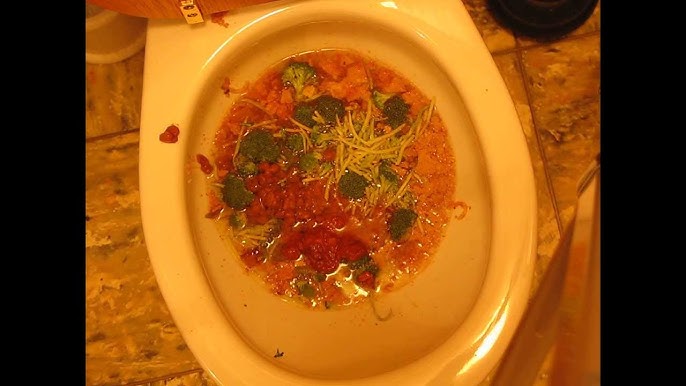Can One to Dispose of Food in the Toilet?
Can One to Dispose of Food in the Toilet?
Blog Article
How do you feel in regards to What Can Happen If You Flush Food Down the Toilet??

Introduction
Many people are commonly faced with the predicament of what to do with food waste, especially when it comes to leftovers or scraps. One typical question that develops is whether it's alright to purge food down the commode. In this post, we'll explore the reasons why people might think about flushing food, the effects of doing so, and different methods for correct disposal.
Reasons why individuals might take into consideration purging food
Lack of awareness
Some people may not be aware of the prospective damage brought on by flushing food down the toilet. They may erroneously think that it's a harmless method.
Benefit
Purging food down the commode might look like a quick and easy service to throwing away undesirable scraps, especially when there's no close-by trash bin available.
Idleness
In some cases, individuals may just choose to flush food out of large negligence, without considering the repercussions of their activities.
Repercussions of flushing food down the toilet
Environmental effect
Food waste that ends up in waterways can contribute to pollution and injury aquatic environments. Additionally, the water used to purge food can strain water resources.
Pipes problems
Flushing food can lead to clogged up pipes and drains pipes, causing expensive pipes repair work and aggravations.
Kinds of food that should not be purged
Fibrous foods
Foods with fibrous structures such as celery or corn husks can obtain tangled in pipes and cause obstructions.
Starchy foods
Starchy foods like pasta and rice can soak up water and swell, bring about blockages in pipelines.
Oils and fats
Greasy foods like bacon or food preparation oils ought to never be flushed down the toilet as they can strengthen and cause obstructions.
Proper disposal techniques for food waste
Making use of a waste disposal unit
For homes geared up with garbage disposals, food scraps can be ground up and purged with the pipes system. However, not all foods are suitable for disposal in this fashion.
Recycling
Specific food product packaging materials can be recycled, lowering waste and lessening ecological impact.
Composting
Composting is an environment-friendly means to throw away food waste. Organic materials can be composted and made use of to enrich dirt for gardening.
The significance of correct waste administration
Minimizing environmental harm
Correct waste management techniques, such as composting and recycling, aid lessen contamination and maintain natural deposits for future generations.
Protecting pipes systems
By avoiding the technique of flushing food down the toilet, home owners can stop pricey plumbing repairs and preserve the integrity of their plumbing systems.
Final thought
In conclusion, while it might be alluring to purge food down the commode for convenience, it is essential to comprehend the prospective effects of this action. By embracing correct waste management practices and throwing away food waste sensibly, individuals can contribute to much healthier pipes systems and a cleaner atmosphere for all.
FLUSH FOOD DOWN THE TOILET?
FLUSHING FOOD CAN CAUSE BLOCKED DRAINS IN YOUR HOME
All of the plumbing fixtures in your home are connected to the same sewer pipe outside of your home. This outdoor sewer pipe is responsible for transporting all the wastewater from your home to the Council sewer mains. Even small pieces of food that go down the kitchen sink can cause problems for your sewer. It should therefore be obvious that flushing larger bits of food, such as meat, risks a clog in either the toilet itself or the sewer pipes. Flushing greasy food is even more problematic because oil coagulates when it cools, coating the interior lining of your pipes.
THE TOILET IS NOT A BIN
Food isn’t the only thing that people shouldn’t be flushing down the toilet. People use the toilet to dispose of all kinds of things such as tampons, makeup wipes, dental floss, kitty litter and even underwear. Water goes to great lengths to educate residents about the high costs and stress placed on wastewater treatment systems simply from people flushing the wrong stuff down the toilet. It costs taxpayers millions of dollars each year, and homeowners thousands in blocked drain repairs.
FLUSHING FOOD IS A WASTE OF WATER
Flushing food is a waste of our most precious resource - water. In June this year Level 1 water restrictions were introduced to protect water supply from drought conditions. Much of New South Wales continues to be affected by prolonged drought with recent figures revealing up to 97 per cent of the state remains in drought. Depending on whether you have a single or dual flush toilet, every single flush uses between five and 11 litres of water. In the current climate this is a huge amount of water to be wasting on flushing food that should be placed in the bin (or better yet, the compost).
https://www.jabplumbingsolutions.com.au/blog/can-you-flush-food-down-the-toilet

As an avid person who reads on Flushing Food Down the Toilet?, I think sharing that piece was really helpful. Kindly take the opportunity to share this blog post if you enjoyed it. Thank-you for going through it.
Book A Service Report this page